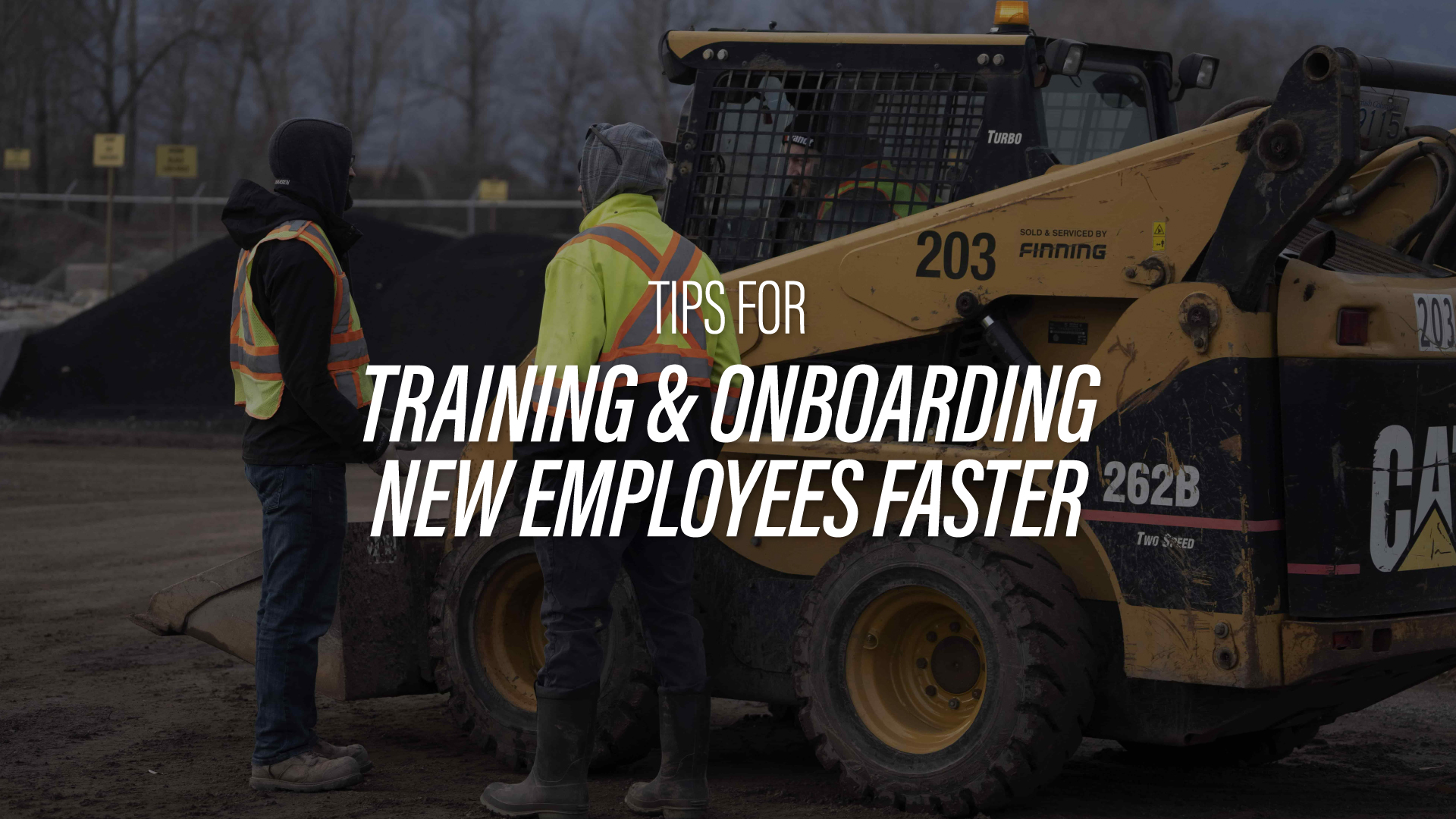The landscape industry is consistently challenged by the strain of maintaining employee retention, forcing them to hire and train new individuals over and over again. This draining task takes away valuable time in the field, making it difficult for landscaping companies to accomplish their work efficiently.
In a recent survey, nearly a third of landscaping businesses reported significant challenges in retaining employees. As you approach the busy season, being able to swiftly train and incorporate new team members is critical in order to stay on top of the workload while still driving a profit. Follow this guide to maximize your onboarding efficiency!
8 Tips for Training and Onboarding New Employees
Ready to revamp your new-hire training procedures? Positive onboarding experiences lead to higher staff retention rates. These tried-and-true strategies are sure to revolutionize your onboarding process and make a lasting impact on company culture.
Organize internal resources
Before you bring in new trainees, it’s essential to prep your landscaping team first. Your internal assets will be instrumental in training new hires and everyone needs to be on the same page.
Plan how and when you’ll introduce key staff members to new team members and outline who is responsible for what part of their training. So much of landscaping new-hire training happens on-the-job, and breaking down the onboarding process into measurable objectives helps set clear expectations for both employees and supervisors alike.
Prepare the right forms and policies in advance
Before candidates can really dig into learning the company culture and routines, all the i’s must be dotted and t’s must be crossed on their paperwork with HR. Make this tedious process painless by having all the essential forms organized and ready for signatures. Prepare a brief overview of the employee handbook, highlighting important company policies, and be ready to field questions about benefits policies and tax forms.
Key forms to read and complete during onboarding typically include:
- Health and safety policy
- Terms of employment
- Receipt of employee handbook
- New employee orientation procedure
- Personal protective equipment sign-off
In addition, make sure to have personal protective equipment (safety boots, safety glasses, gloves and respirators etc.) ready so they can be issued on the employee’s first day. This demonstrates a commitment to safety from day one!
Create a training roadmap and checklists for each role
You’ve selected great candidates, now help them thrive by giving them a clear path to success. New team members should know where they stand, what’s expected of them and how they’re tracking against milestones.
Lay out the roadmap for each new hire with specific tasks and workflows. This will keep even the most inexperienced landscaping trainees on track while minimizing your time investment in onboarding. An example roadmap might look like:
Week 1 Onboarding Checklist
Day 1: Pick up company equipment and personal protective gear
Day 2: Meet the team, read employee handbook
Day 3: Learn safety protocol and core landscaping techniques
Day 4: Tour job sites and review customer service strategies
Day 5: Onboarded with full crew
Provide a checklist for each specific role so that trainees will know for sure if they’re hitting the mark. The clearer you are with your expectations, the more likely your new hires will be to rise to the occasion. A sample checklist for a Foreman role might include:
Foreman
- Customer greeting
- Job planning
- Safety supervision
- Daily inspections
- Daily customer updates
- Supply orders
- Holding accountability to budgets
- Final inspections
- Customer walk arounds
Plan to provide regular check-ins and feedback. Your new hires need to know how they’re doing so they can get off on the right foot. Onboarding is not a one-way street! Regular check-ins with supervisors provide opportunities for open dialogue and to ensure everyone is on the same page.
Make weekly “4 O’Clock 4” check-ins a priority. Here’s the quick and easy agenda for this type of check-in:
- Review Goals
- Work Completed
- Obstacles/Slow Downs
- What Do You Need?
Start onboarding before their first day
With so much to learn, onboarding can be downright daunting for a new hire. Take some of the pressure off by giving them a head start with any materials you can provide in advance. A company overview, safety manual and employee handbook are all great places to begin.
Begin networking trainees before they even walk in the door. Onboarding doesn’t need to be an isolated experience – great employees will want to know their team and start building relationships. Make introductions in advance, letting them know who they’ll be working with before day one. Starting off with familiar faces and some background knowledge will help trainees hit the ground running.
Communicate all things from day 1, no matter how small
The wise words You don’t know what you don’t know, are important to remember as you bring new candidates into your fold. Never assume that trainees know the most basic details about their role and your business, or that they’ll naturally pick up what everyone is doing by osmosis.
What seems like common sense to you may easily be overlooked by an overwhelmed trainee. Communicate all things from the get-go, even if they feel obvious. Over-clarifying will only help new hires feel well-informed and comfortable in their surroundings.
Be sure to sweat the small stuff:
- How to clock in and out
- Locker assignments
- Where to park
- End of day closing expectations
- Uniform laundering
- Lunch routine
Communicating the small things, right down to company jargon, will help your trainees fit right in and feel part of the team faster. Meaning they’ll be more likely to stay!
Implement a buddy system
Pairing new hires with veteran team members can be a great way to quickly orient them within the organization. Onboarding buddies are like a safety net for trainees – providing support, answering questions and helping them feel at home in the workplace.
Buddies should have experience in the same role and be available to answer questions, provide tips and give a friendly face in the workplace. Onboarding buddies can also help keep everyone organized by logging questions or tasks that need to be addressed during onboarding sessions.
Standardize processes
You may be able to juggle a few new hires yourself, winging it day by day. But that method is certainly not scalable. To secure onboarding success, you have to prioritize standardizing your processes for consistency and accuracy.
Leverage an online training platform
Empower your new landscaping hires to take ownership of onboarding. Help them become self-sufficient by giving them the tools they need to get up to speed quickly. The best way to accomplish this is to make sure each employee has access to a comprehensive digital training portal with videos and printable resources related to their particular role.
An online training platform acts as a hub of knowledge that you can use again and again. It allows trainees to review and dive deeper into skills during their onboarding journey.
Learn more about how Greenius, part of the LMN product suite, can help you train, retain and manage your employees.




